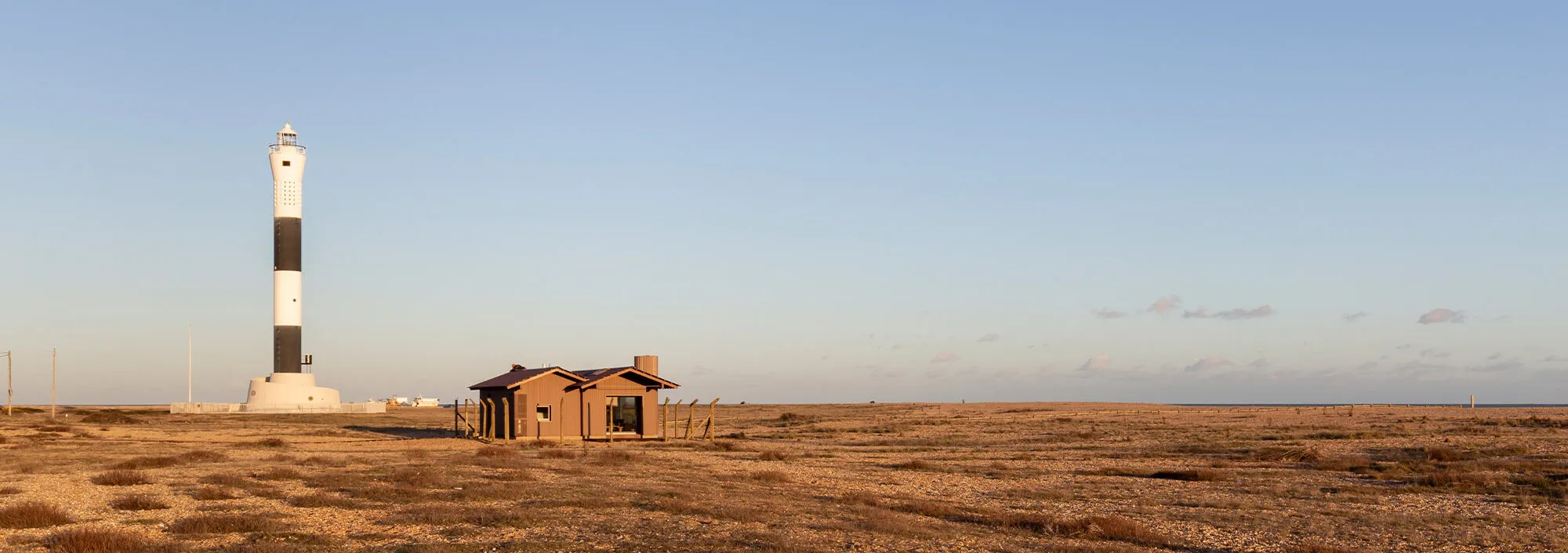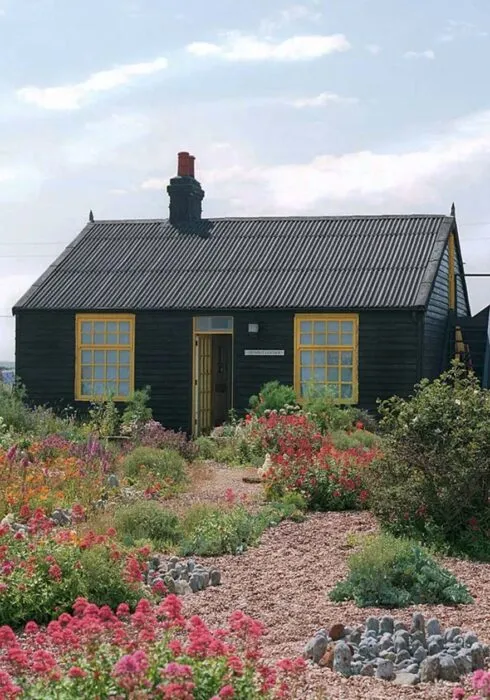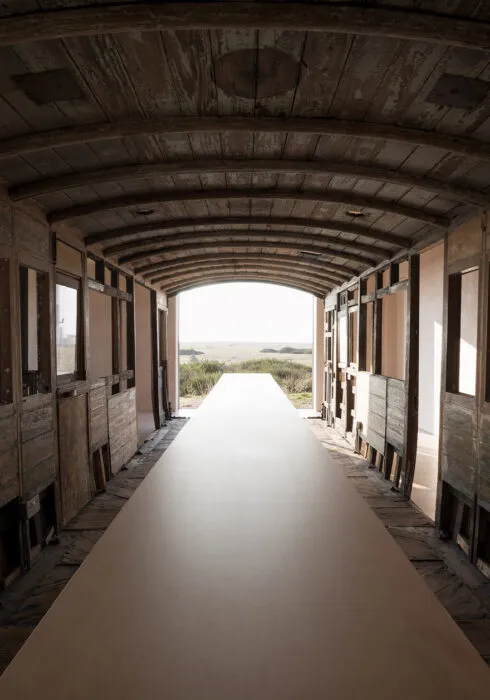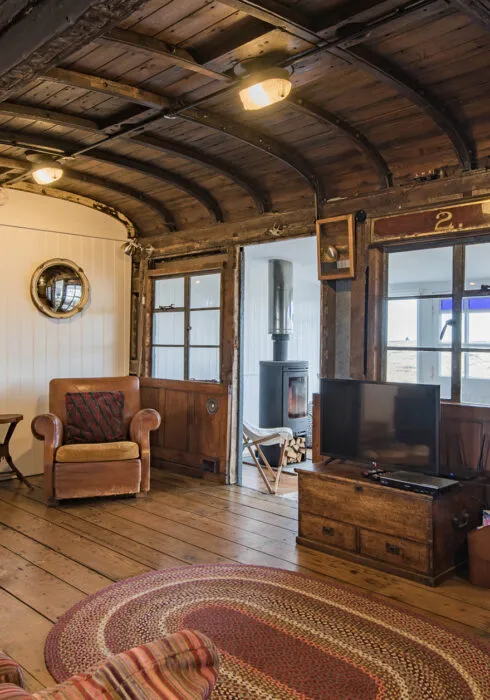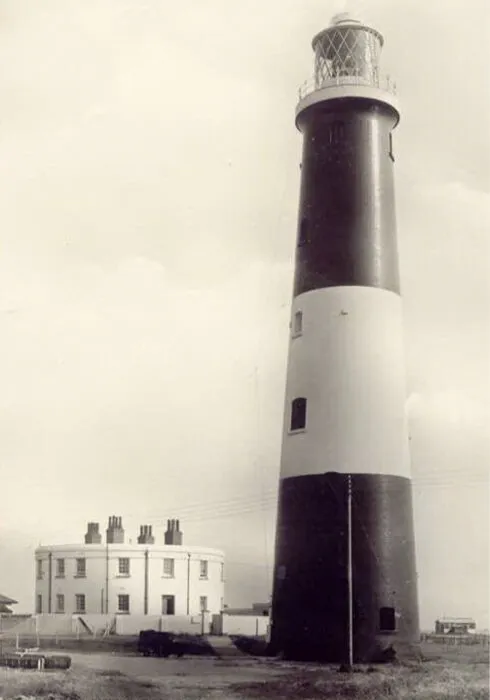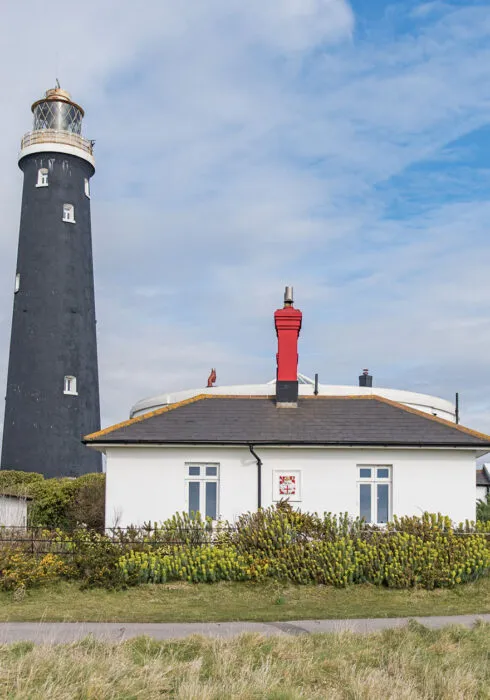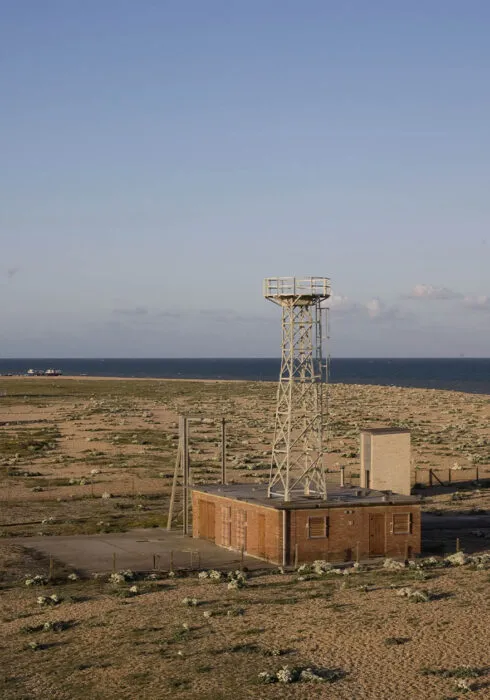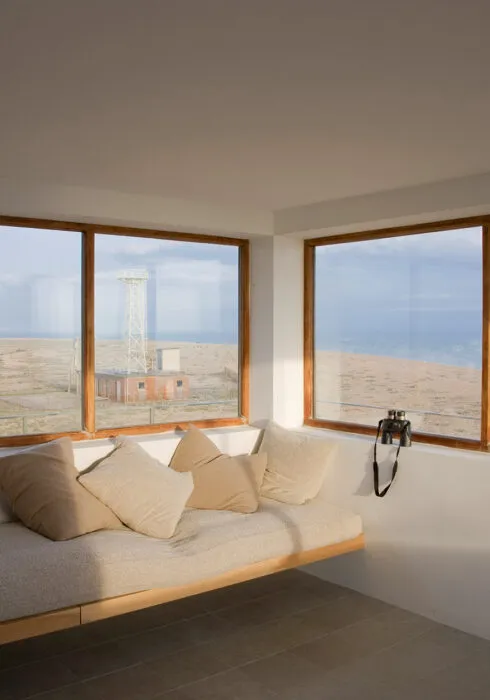Renowned for its rugged beauty and captivating surreality, experience windswept shores and an eclectic mix of architecture in Dungeness.
Sitting at the southernmost edge of the county lies the captivatingly eccentric seascape of Dungeness. Its shingle beach, teeming with wildlife, exudes an artistically isolated, otherworldly ambience.
This allure is amplified by the presence of converted wartime industrial buildings, fisherman’s huts, and stoic lighthouses, punctuating its diverse terrain and telling stories of endeavours past.
This surreal and remote landscape hosts a rich array of rare plant and animal species making it a haven for artists seeking inspiration. Artists including Derek Jarman and Pink Floyd have used Dungeness’ alien landscape for their work and Derek Jarman’s house, Prospect Cottage, was recently saved for the nation to serve as ongoing inspiration for future generations.
The point of Dungeness sits about three miles out into the English Channel and thanks to its unusual geography, is an area of Special Scientific Interest and a protected bird sanctuary which means Dungeness will remain an unspoilt tract of land.
At the ‘north’ end of the estate explorers can find the ‘Watering House’ which, as the name implies, was constructed to house the family who provided fresh water to passing shipping.
However, the majority of the buildings at the ‘south’ end of the area came into being in the 1920s. This was when workers employed by Southern Railway purchased old rolling stock and had them towed off at the end of the line – to become holiday ‘shacks’.
Several of the ‘shacks’ in this area still retain the original railway carriage as part of their building, identified by their ‘carriage’ shape and all adding to the quirkiness of this unique, characterful landscape.
Old railway carriages make surprisingly good interiors. Check out Channel View, Dungeness or Sunray, they have both beautifully preserved parts of the original railway carriage retained inside the holiday home.
Perhaps the most interesting building at Dungeness is The Old Lighthouse. A historic Grade II listed building, it recently commemorated its centenary milestone. Unveiled amidst great ceremony by His Royal Majesty the Prince of Wales in 1904, it withstood the trials of two world wars before its decommissioning in 1960. For 56 years, it served as a guiding beacon for vessels navigating the treacherous waters of the English Channel, earning a revered place in Nickolaus Pevsner’s “Buildings of Kent.”
Rising majestically to nearly 46 metres in height, crowned by a commanding weather vane, and boasting an impressive diameter of 11 metres, the Lighthouse stands as a testament to architectural prowess. Its sturdy frame, crafted from engineering bricks complemented by sandstone inner walls, required the labour of countless hands and the placement of over three million bricks.
Within its imposing exterior, a labyrinth of mezzanine floors fashioned from slate and bolstered by steel beams and monumental rivets awaits exploration. Circular concrete stairs, adorned with ornate wrought iron bannisters, gracefully ascend alongside the walls, connecting each level with effortless grandeur. Cambered casement viewing windows adorn every floor, offering panoramic vistas of the surrounding landscape.
East and West Cottages are both former lighthouse keepers cottages set at the foot of the historic roundhouse in Dungeness with great views of the Lighthouse. If the walls could talk they could tell you a tale or two of the former lives of the lighthouse keepers, dating back to the early 19th century. Both of these cottages now sleep four guests and can accommodate one four-legged family member.
One of the best ways to see Dungeness is by hopping on the Romney, Hythe and Dymchurch Railway, which dates from 1927. A spectacular daytime trip for adults and children alike, The Romney Hythe and Dymchurch Railway was a culmination of the dreams of Captain J. E. P. Howey — a racing driver, millionaire land owner, former army officer and miniature railway aficionado and Kent legend.
Count Louis Zborowski, who was an eminently well-known racing driver of his day and most famous for owning and racing the Chitty Bang Bang Mercedes that inspired Kentish author Ian Fleming for his much-loved tale of the same name.
Almost 100 years later, what was once known as the ‘smallest public railway in the world’ still stands, taking passengers on an enchanting journey through the Kent countryside and along this spectacular stretch of coast.
With fishing being such a large part of the culture and heritage here, there are, of course, plenty of places to indulge in one of Kent’s most famously loved dishes: fish and chips. The End of The Line is one of the area’s top restaurants, with outdoor seating for warmer days.
Another top spot is The Pilot. The engine and propeller, in the garden of The Pilot, is one of four original Wright/Cyclone engines and propellers from a WW11, B17 Flying Fortress bomber. The artefact was accidentally snagged off Dungeness on the 18th of September 2017, by two local fishermen.
The pub itself also has an enthralling history which relates to the isolation of Dungeness and its irresistible lure to smuggling gangs. Here, the absence of prying eyes and wagging tongues meant that they could carry on their work undisturbed.
In a single week of 1813 free traders were known to have landed 12,000 gallons of brandy at Dungeness. 180 years earlier the local smugglers lured around a Spanish vessel, Alfresia. They murdered the crew and looted the cargo of spirits. It was this ship that was used to build the original Pilot, which stands in the same place to this day.
Dungeness remains a place of escape for holidaymakers, especially being only around two hours drive from central London. Check out Fog Signal Building, Pump Station, Coastguard Lookout or North Vat if you want an unusual stay.
Fog Signal Building is the former foghorn testing station complete with a steel tower. Pump Station is a special one and has been featured on George Clarke’s Remarkable Renovations (Channel 4). It’s a unique building built during World War 2 as a pumping station to send fuel through undersea pipes to France to support the D-Day landings now beautifully converted into a fabulous contemporary holiday home.
Or stay up high in Coastguard Lookout, a converted tower originally built by HM Coastguard to monitor shipping in the Channel.
Beyond its natural beauty and architectural wonders, Dungeness harbours a wealth of hidden gems waiting to be discovered. Venture along its wooden boardwalks, where every step reveals a new perspective on this enigmatic landscape.
In the hustle and bustle of modern life, Dungeness offers a welcome respite. A sanctuary for the soul amidst the chaos of the world, here, time seems to stand still, as the rhythms of nature take precedence over the demands of everyday life.
Whether you come to explore, to create, or simply to contemplate the beauty of the world around you, Dungeness promises an experience like no other – a journey into the heart of nature’s beachy wonderland.
